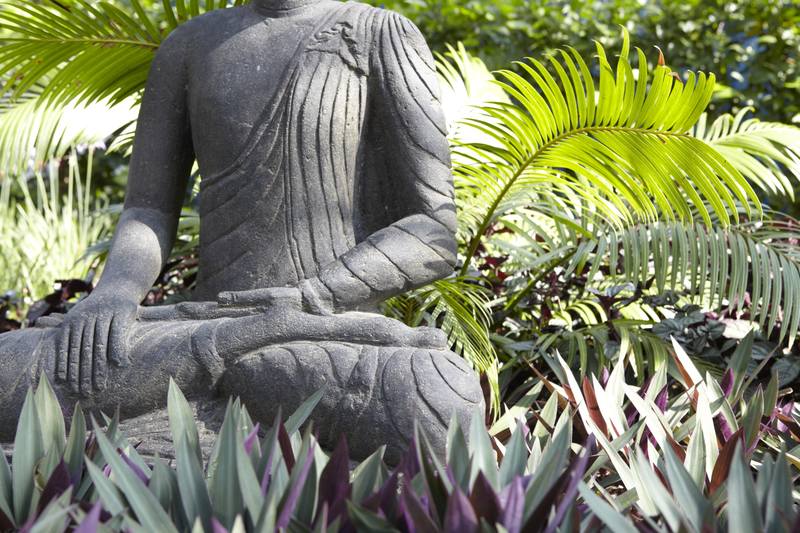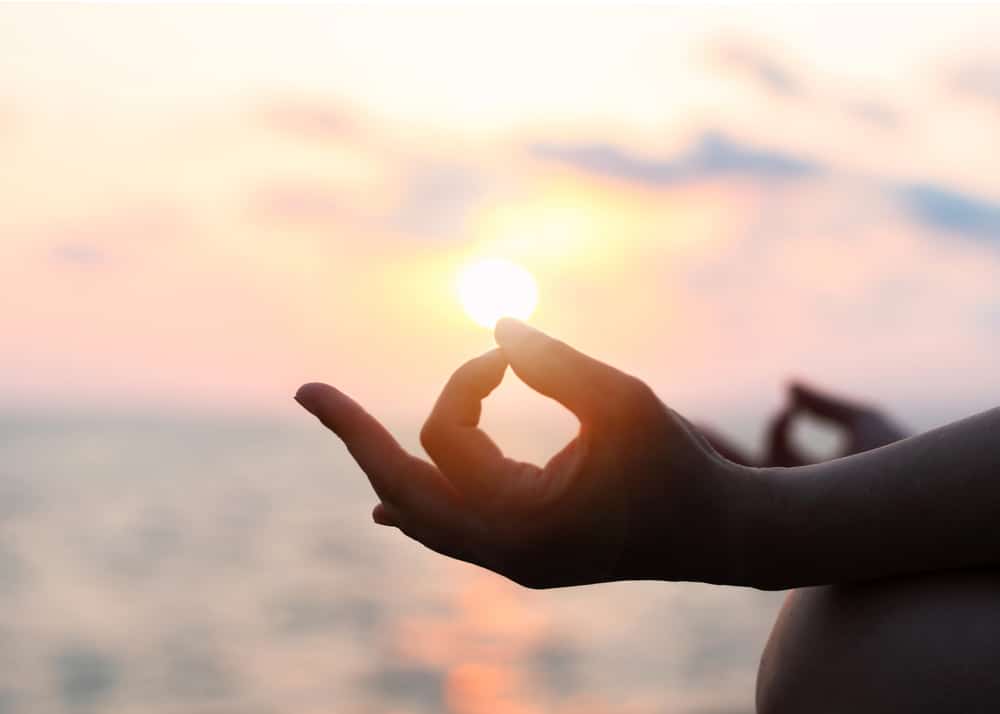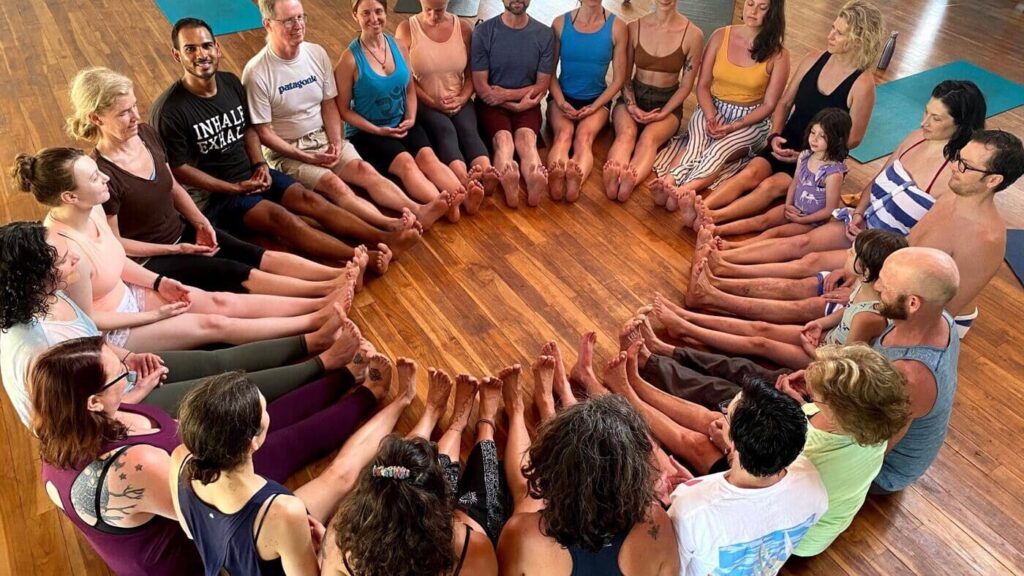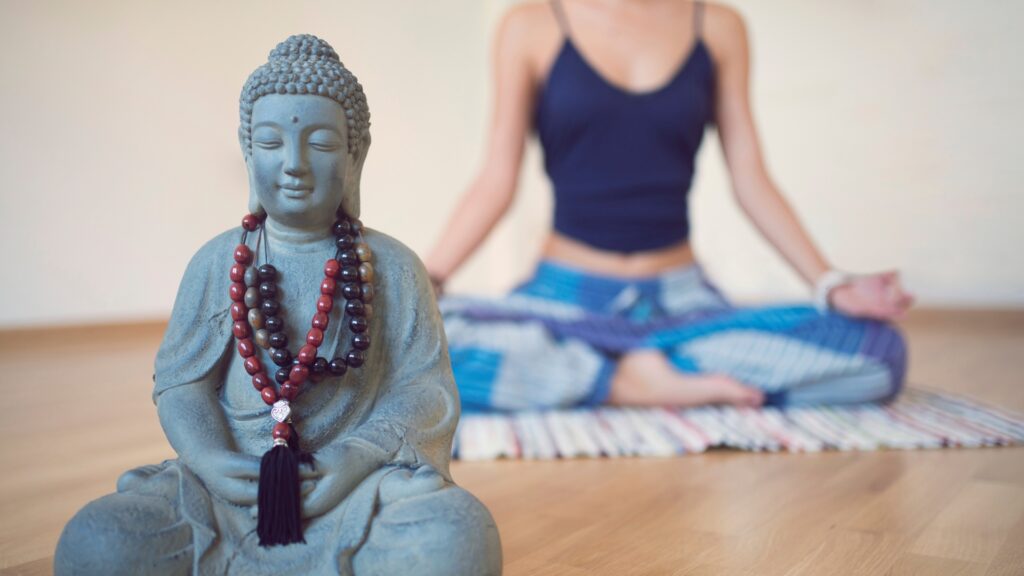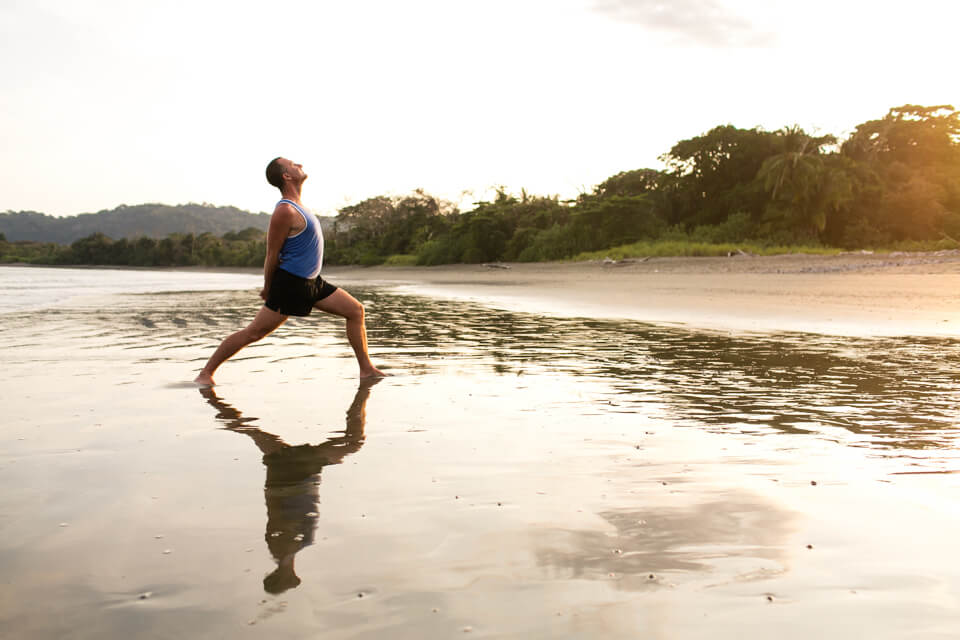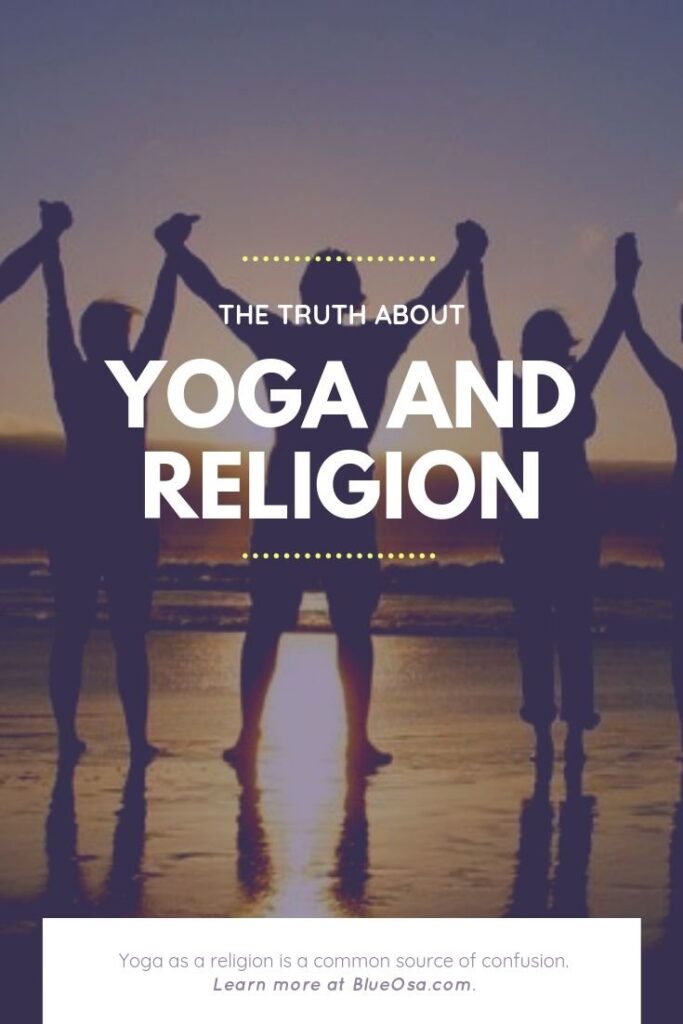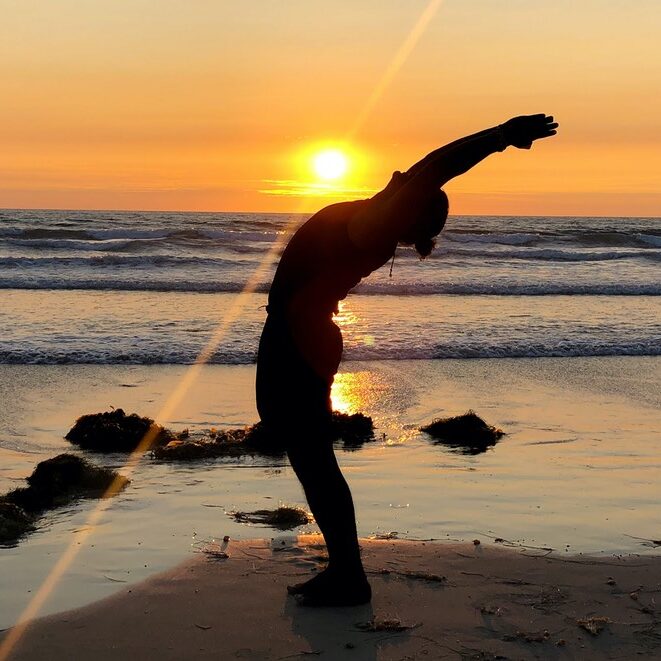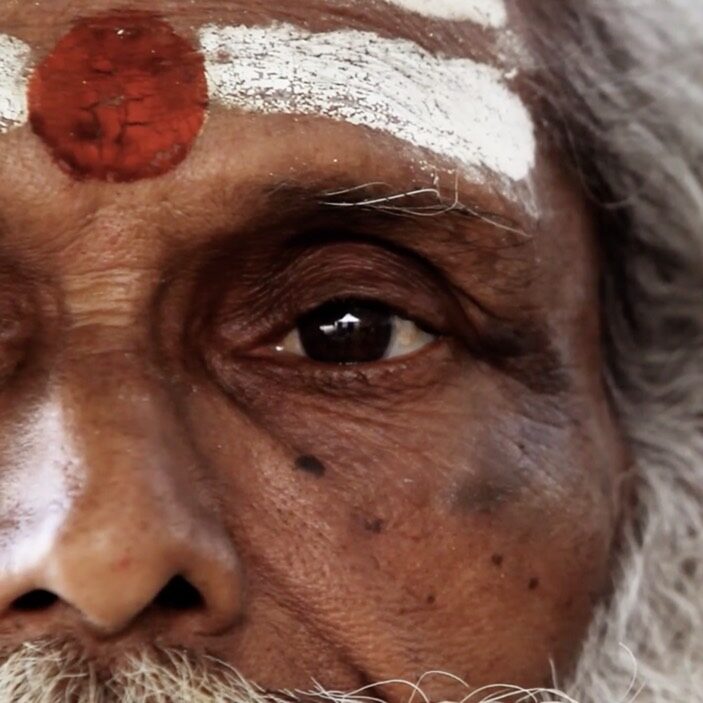Yoga is a booming industry. More people are practicing than ever before and the number of yoga methods and philosophies vary widely. For some practitioners, yoga is simply a way to build physical strength and improve fitness. For many, it’s a way to reduce stress and balance out their busy lives. Others see yoga as an intensely spiritual practice. However, as yoga has become more popular, misconceptions have also grown increasingly widespread.
In recent years, there has been some controversy regarding yoga and religion. Some believe that yoga is fundamentally religious and therefore conflicts with other kinds of faith. As yoga has roots in Hinduism, some have suggested that it has no place in secular institutions, such as schools.
However, yoga is not an organized belief system. It doesn’t require any particular faith and it’s open to everyone, regardless of religion or culture. In yoga, there are no requirements to believe in a God and there are no religious rituals, such as First Communion or Bar Mitzvah. There are ties to yoga and spirituality, yet the argument of yoga and religion continues to cause controversy.
Let’s dive deeper into understanding the correlation between yoga and spirituality . . .
Is Yoga Fundamentally Religious?
Although yoga is mostly practiced in a secular way, many people find it spiritual. However, this doesn’t mean that yoga is fundamentally religious. It’s a philosophy that’s all about promoting health and living a harmonious existence. Yoga is about improving the mind-body connection and achieving inner calm, which leads to spirituality in yoga. Also, although yoga can be a wonderful introduction to spiritual life, and can even deepen existing faith, it does not require any particular religious beliefs.
Yoga’s Hindu roots are sometimes a source of confusion and are likely to have led to the misconception that yoga is a religion. But as Dr. Pullig explains in her book, Back Care Basics, “just as the practice of the Japanese martial art of karate and aikido does not require becoming a Buddhist, the practice of yoga does not require you adopt Hinduism”.
‘Yoga’ as an Evolving Term
The confusion surrounding yoga and religion is likely to be caused, in part, by the fact that yoga is a very broad term.
Yoga includes a huge variety of methods and philosophies and some are more overtly spiritual than others. For example, Hare Krishna monks practice Bhakti yoga, or “yoga of devotion”. A spiritual Hindu practice that focuses on devotion to a god, Bhakti is very different from the physical yoga styles most of us are accustomed to.
Meanwhile, in the West, most people start practicing yoga for its health benefits and to balance out their busy, stressful lives. Most modern yoga that’s offered in the West has evolved from ‘Hatha’, which focuses on nurturing physical and mental strength on the path to enlightenment. However, the term “enlightenment” isn’t necessarily related to spirituality. For some yoga practitioners, it simply means achieving stillness in the mind, while for others, it’s about gaining an understanding of the world and its role in it.
Yoga classes also vary in terms of how spiritual they are. While some teachers encourage the chanting of “om”, a primordial sound in Buddhism and Hinduism, others avoid making any spiritual references at all. Some teachers might chant Hindu sutras, while others focus solely on physical precision and alignment. In many Western yoga classes, closing with a final “Namaste” is the only overtly spiritual reference in class.
The Difference Between Religion and Spirituality in Yoga
Spirituality is an inclusive concept that includes lots of different perspectives and interpretations. It can also be very personal – what one person considers sacred might not be meaningful to someone else.
Dr. Larry Dossey, an advocate for spirituality in healthcare, describes spirituality as “a sense of connectedness with something greater than oneself.” In this context, it is a universal human experience and something that’s accessible to everyone. Although the broad nature of spirituality can sometimes cause confusion, it is this flexibility that separates it from religion.
On the other hand, religion is a system of faith that’s organized around certain beliefs and practices. As Dr. Dossey explains, it is “a ritualized form of spirituality involving a specific set of beliefs, worship, and conduct.” As modern yoga is not an organized system and does not contain any rituals or requirements, it can’t be categorized as a religion. Instead, there’s spirituality in yoga, which allows for connectedness.
One translation of the word “yoga” is “unity”. One of yoga’s great benefits is that it improves the connection between mind and body, while also promoting unity on a community level. Because yoga helps people to achieve this sense of oneness and connection, it’s often embraced as a spiritual practice. By cultivating spirituality, yoga can help people go deeper into their faith. Yoga can often add new depth to religion, rather than conflict with any existing beliefs. In this sense, the spirituality of yoga and organized religion can happily coexist.
Legal Controversy Relating to Yoga and Religion
More people are practicing yoga worldwide than ever before. However, yoga’s growth in popularity hasn’t been without controversy. Some religious leaders and parents have voiced concern over the introduction of yoga in schools. In San Diego, parents sued the Encinitas Union School District, because they felt that the schools’ Ashtanga yoga classes conflicted with their religious beliefs. However, a judge ruled that teaching yoga in public schools did not represent a governmental interest in religion.
In 2013, a pro-yoga group petitioned the court to make yoga a compulsory school subject in India. Jagdish Chander Seth, a lawyer for one of the petitioners, argued that yoga was fundamentally not a religion. According to Seth, yoga is “a path for spiritualism through a healthy body and mind” and schools should treat it in the context of a “science for breathing and physical postures”.
Practicing Spirituality in Yoga
Yoga is a mental practice as much as it’s a physical practice. However, depending on which classes you attend, you might find that your teachers focus only on the physical. Fortunately, by developing an awareness of yoga’s spiritual aspects, and by considering what spirituality means to you, you can make it a more significant part of your practice.
Cultivating Awareness
If you’ve been practicing yoga or meditation for a while, you might have heard a lot of talk about energy. For many teachers and advanced yogis, cultivating an awareness of energy is key to living a spiritual life. In yogic philosophy, energy centers are known as chakras. Each chakra has its own physical, mental, emotional, spiritual, and energetic attributes. Prana, or life force, runs through the energetic pathways in our body and we can manage this energy through yoga, meditation, and pranayama. By cultivating an awareness of this energy, you’re embracing the spiritual side of yoga.
Practicing yoga is also a wonderful way to cultivate an awareness and understanding of yourself. As well as realizing your physical capabilities and limitations, you can develop an understanding of your actions and reactions. By understanding yourself on a deeper level, you’ll be armed with the necessary tools to achieve your best.
Relinquishing Control
Developing a practice that focuses on spirituality in yoga forces you to relinquish control. Yoga is not about controlling your mind, body, or environment. Instead, it’s about creating strength and stability within yourself so that you can deal with whatever life throws at you. Breathing through a pose, while allowing your mind to reach a place of stillness, is a wonderful exercise in relinquishing control.
Finding Stillness
We spend so much time rushing around and analyzing our behavior, that it can be hard to find the time to connect with ourselves and achieve a quiet mind. Yoga will give you the space to achieve this. Whether you’re sweating through a strenuous Vinyasa class or relaxing in a meditative Yin Yoga class, yoga gives you space to just be.
Finding Oneness
Yoga is holistic in the sense that it combines spiritual, physical, and mental practices. According to yogic tradition, the unity of mind, body, and spirit leads us to a place of higher consciousness. In Raja Yoga, the word “yoga” means “union”. In this context, it’s about moving beyond duality, living in harmony, and feeling connected to the universe. Yoga teachers often conclude classes by saying, “Namaste”, which is an expression of this oneness.
Namaste, a traditional Indian blessing, is typically said when meeting or leaving someone. When speaking, the person typically brings their hands together in a prayer position to their heart center. One interpretation of Namaste is, “The Divine in me honors the Divine in you”. This essentially means, “We are one and the same”. The blessing is about honoring oneness and equality, recognizing that all are created from the same essence.
Yoga and Spirituality: The Spiritual Meaning of Yoga Poses
From lower back stretches to hip openers, different yoga poses can help you improve various aspects of your flexibility and strength. However, just as it’s important to practice poses because of their physical benefits, it’s equally important to consider their spiritual meaning. By cultivating an awareness of the symbolic side of poses, you can add even more depth to your practice. Although almost every yoga pose has a spiritual aspect, the following five asanas are great yoga and spirituality poses to discover:
1. Mountain Pose (Tadasana)
Mountain Pose is the foundation for all standing poses. The pose involves standing tall in a grounded and stable position, just like an immovable mountain. The spiritual symbolism of this yoga pose is layered.
Some believe that the mountain represents the aspiration within all of us to transcend ourselves and reach a place of enlightenment. Others believe that by rising above conflict and challenges, we reach a place of unity, represented by the peak of the mountain. Alternatively, to envision your potential and the endless possibilities in life, imagine yourself standing on top of a mountain while in Tadasana.
2. Tree Pose (Vrksasana)
Tree pose is about finding and maintaining balance, without the need for rigidity. Although your lower body stays firmly rooted in this pose, just like the trunk of a tree, your upper body has the freedom to be flexible. In tree pose, you stabilize your lower body first, before raising your arms and heart center to the sky. Allowing for flexibility means that you can dance with the wind while remaining rooted in the earth.
3. Eagle Pose (Garuda)
Although translated to “Eagle Pose” in English, Garuda refers to a huge, mythical bird. In Hindu culture, Garuda is the vehicle of Lord Vishnu, who is believed to be the preserver and protector of creation. According to Hinduism, Vishnu sustains the universe by being fully present. You can bring a meditative focus into your practice by embracing this ancient symbolism. As you settle into Eagle Pose, commit to being present. The pose requires great focus and patience, both wonderful lessons for leading a spiritual life.
4. Lotus Pose (Padmasana)
The lotus flower is a symbol of mental purity and faith, so it’s a fitting name for a pose that’s commonly used for meditation and pranayama. While in Lotus Pose, we can purify and energize the body by breathing. Breathing slowly and deeply is a wonderful way to release tension, cleanse the cells, and calm the mind.
5. Child’s Pose (Balasana)
Although usually regarded as a simple asana, there is a spiritual element to Child’s Pose. The positioning of the pose – kneeling on the ground with your arms stretched out in front of you, forehead resting on the mat – symbolizes surrender. By settling into this pose, you can let go of all external demands and sink into a childlike state of restfulness.
How to Prioritize Yoga and Spirituality
There is undoubtedly a spiritual element to yoga. However, this doesn’t mean that yoga is fundamentally religious. Whether you enjoy sweating through a Vinyasa Flow class or love the meditative aspect of Yin, you can embrace the practice regardless of any existing faith.
Yoga doesn’t require you to worship a particular God or hold a specific belief system. Instead, it’s about improving your physical and mental health, developing greater self-awareness, and living a harmonious existence. Yoga is inclusive and its benefits are available to anyone who wants to jump in.
If you’re interested in learning more about the connection between yoga and spirituality, we invite you to join our yoga teacher training. This life-changing experience will give you the tools and resources needed to find the spirituality in yoga and pass along our wisdom to other like-minded yogis.
Namaste.


